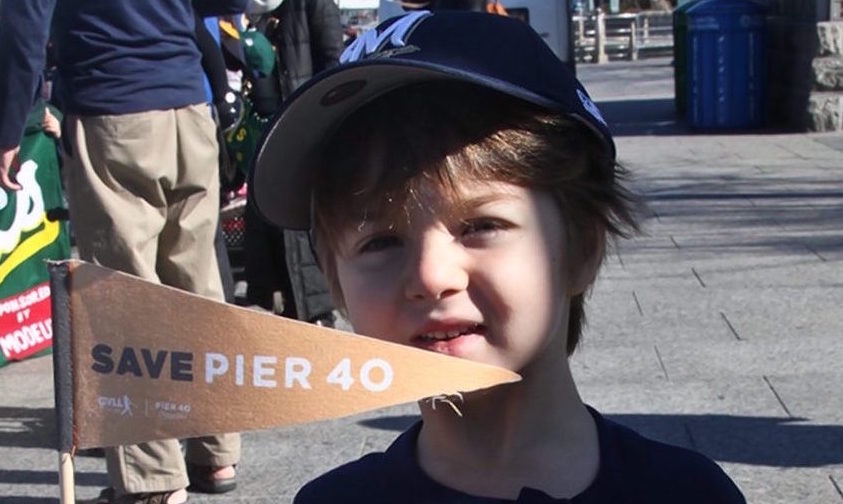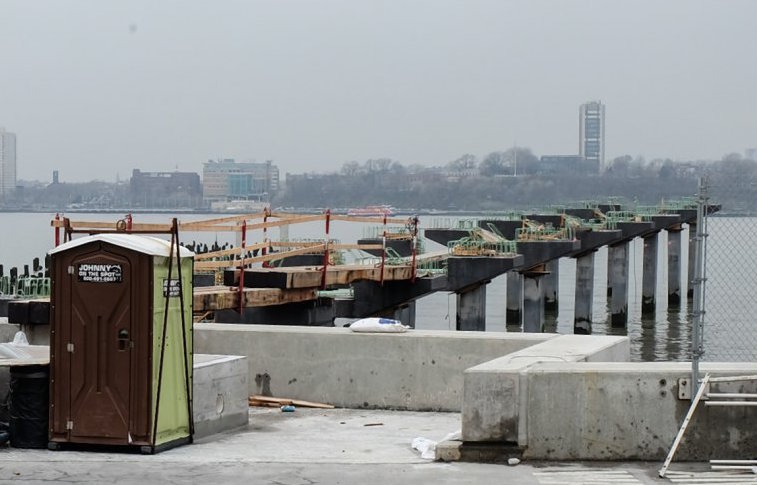
BY LINCOLN ANDERSON | It turns out the Hudson River Park Trust and the U.S. Army Corps of Engineers have an additional month — until May 22 — to decide if they want to appeal the recent devastating ruling against the Pier55 project.
Last month, a federal judge yanked the Corps’ permit for the glitzy $200 million project planned for off of W. 13th St., which was to be funded by Lower West Side power couple Barry Diller and Diane von Furstenberg.
Tom Fox, one of the two City Club of New York plaintiffs who filed the successful lawsuit, said the deadline to appeal is longer because a federal agency is involved in this case. Both the Trust — the state-city authority which operates and is building the 5-mile Lower West Side waterfront park — and the Corps would have to appeal.
Asked this week if the Trust was planning to challenge the ruling, a spokesperson said, “We are going to decline comment at this point.”
If they don’t appeal, then the whole project has to go back to the drawing board for a redesign — that is, assuming the Trust still wants to pursue it.
Last month, Judge Lorna Schofield ruled that the Army Corps had erred when it issued a permit for the “arts fantasy island.” Schofield said the Corps had, in fact, violated the Clean Water Act in issuing the permit because the “basic use” of Pier55 — which would be for performances and non-water-based recreation — is not “water dependent,” so it doesn’t need to be on a pier.
Because the Pier55 project called for using quirky “pot”-style support piles, it came under scrutiny under the federal Clean Water Act. The specific trigger for the review was that the plan involved pouring concrete “fill” into the hollow metal piles once they were already pounded into the river bottom. Any project involving fill or dredging in a protected water area activates a Clean Water Act review.
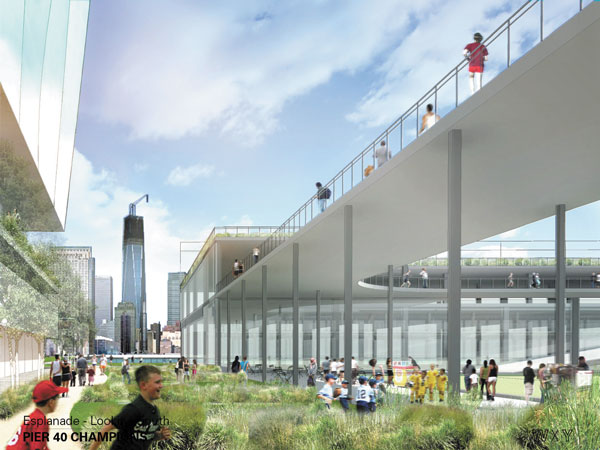
Meanwhile, moving along to the next potentially contentious Hudson River Park site, Community Board 2’s Future of Pier 40 Working Group will hold its inaugural meeting on Thurs., April 27, at The Door, 555 Broome St., starting at 6:30 p.m.
According to the C.B. 2 Web site, the Trust will give a presentation to the Working Group on how it envisions redesigning and redeveloping the 14-acre W. Houston St. pier.
The Villager has previously reported that the Trust would like to re-mass the currently developed space on the pier. In addition, the Trust wants to add some additional space to what’s there now, especially after Councilmember Corey Johnson brokered a deal for the St. John’s Partners project last year that bars any future air-rights transfers from Pier 40 into the C.B. 2 district, which stretches from W. 14th St. to Canal St. along the Hudson. So, now unable to sell more air rights across the highway, the Trust hopes that at least it will be able to increase the developed space on Pier 40, allowing it to collect more revenue for the park.
St. John’s Partners has agreed to buy 200,000 square feet of air rights from the pier for $100 million for use in their residential development project on the current St. John’s Center site.
The authority feels commercial office space would be a financially viable use to add to Pier 40. But the Hudson River Park Act of 1998 — the park’s founding legislation — does not allow this use at the pier, so the act would need to be amended by the state Legislature.
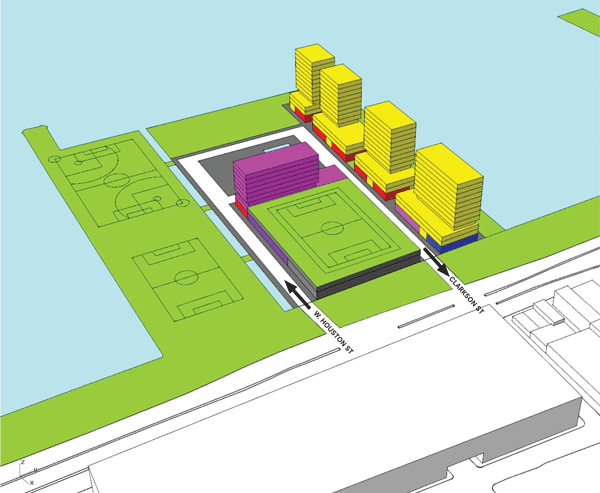
Currently, Pier 40 is ringed by a three-story “doughnut”-shaped pier-shed building, which encloses the courtyard, containing a Yankee Stadium-sized turf-covered sports field that is heavily used by local youth sports leagues and others.
The big challenge, of course, will be trying to find some sort of middle-ground “compromise” between what the Trust wants — i.e., more development on the pier — and what the community and C.B. 2 want — i.e., not the maximum allowable development on the pier.
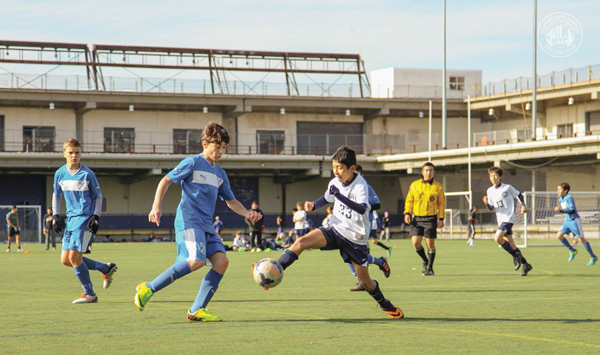
The Villager recently asked the Trust for clarification, and a spokesperson conceded that the City Council, in the written document approving last year’s St. John’s deal, did not say anywhere that the Trust is automatically allowed to max out its development rights on Pier 40.
Clearly, it will be a negotiating process between the Trust, C.B. 2, local politicians, youth sports leagues and the rest of the wider community.
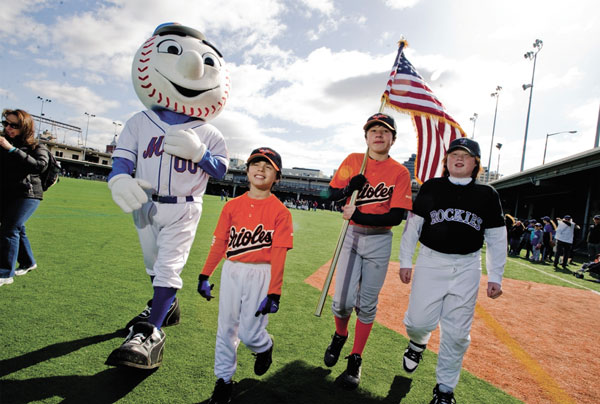
Mr. Met and a trio of Little Leaguers proudly ushered in the colors on Pier 40 at Greenwich Village Little League’s opening day in 2010. Photo by William Alatriste / NYC Council
Tobi Bergman, who chairs the Future of Pier 40 Working Group, had expressed concern that Madelyn Wils, the Trust’s C.E.O. and president, was apparently overreaching in her statement back in December, after the St. John’s deal was brokered.
“We thank the City Council for acknowledging today that the remaining development rights on Pier 40 should be used on the pier itself in a future redevelopment,” Wils said back then.
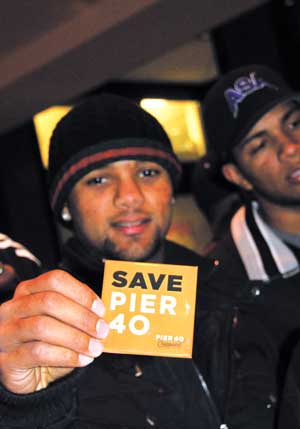
However, as Bergman correctly pointed out to The Villager, nothing in the St. John’s agreement said that all of the W. Houston St. pier’s remaining air rights should be used on the pier.
Asked about what people should expect to hear at the April 27 meeting, the Trust spokesperson said, “At the request of C.B. 2, we’re just going to be providing some basic background information about Pier 40 and the overall park.”
In a follow-up comment after this article’s publication, the spokesperson added, “There will be no plan for a redeveloped Pier 40 discussed because there is no current plan. In fact, developing a workable framework for such a plan is the primary goal of this community process.”
Asked the same question – what to expect at next Thursday’s Working Group meeting — Bergman did not respond by deadline.
Bergman is a former president of Greenwich Village Little League and was the point person for the Pier 40 Champions — a group of local youth sports leagues — in their efforts to revamp the pier a few years ago.
Correction: The initial version of this article incorrectly stated that the Hudson River Park Trust declined to comment when asked what people could be expecting to hear at the April 27 meeting of the C.B. 2 Future of Pier 40 Working Group. The Trust’s response is now included in the article.



